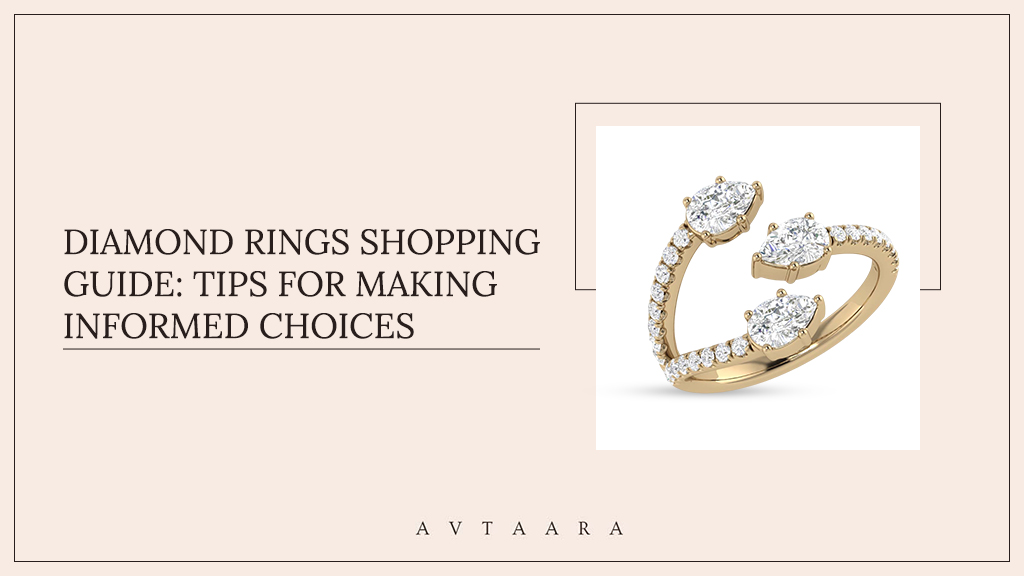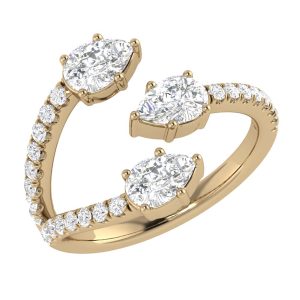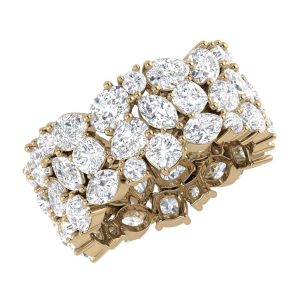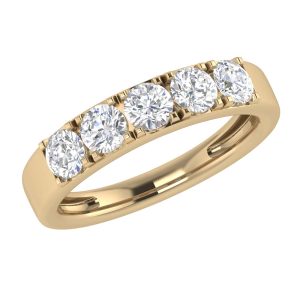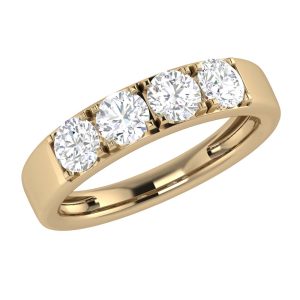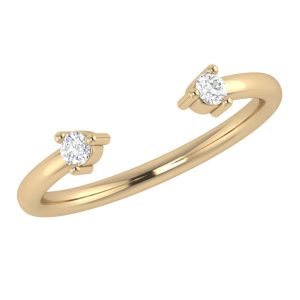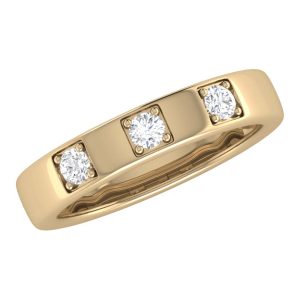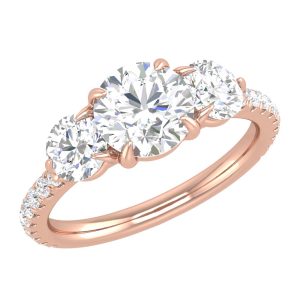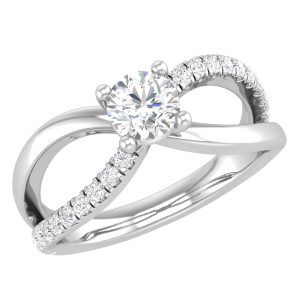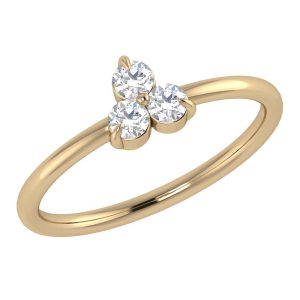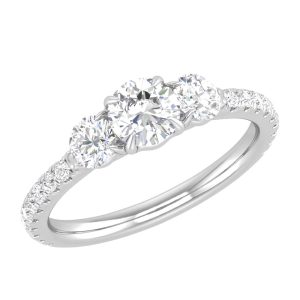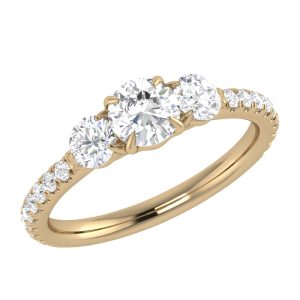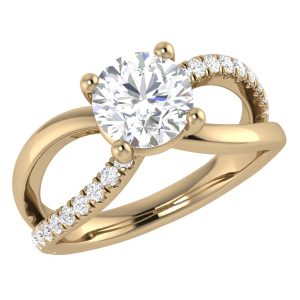Diamond rings are one of the most popular and timeless pieces of diamond jewellery. Whether you’re purchasing an engagement ring, a wedding band, or a piece of jewellery to celebrate a milestone, it’s important to make informed choices. After all, a diamond ring is an investment that should be cherished for a lifetime. In this diamond ring shopping guide, we’ll explore the key considerations to keep in mind when making your purchase. From understanding the basics of diamond rings to choosing the right metal and style, we’ll cover it all to help you find the perfect ring.
Understanding the Basics of Diamond Rings
Before diving into the world of diamond rings, it’s important to understand the basics. A good starting point is familiarizing yourself with the 4Cs of diamonds: cut, clarity, colour, and carat. These factors determine the overall quality and value of a diamond.
The cut of a diamond refers to how well it has been shaped and faceted. A well-cut diamond allows light to reflect brilliantly, creating a stunning sparkle. The precision and craftsmanship involved in cutting a diamond can greatly enhance its beauty and value.
Clarity is another important aspect to consider when evaluating a diamond. It measures the presence of any internal or external flaws within the diamond, known as inclusions and blemishes. The fewer the inclusions and blemishes, the higher the clarity grade of the diamond.
Colour is also a significant factor in determining the quality of a diamond. Most diamonds appear colourless, but some may have subtle yellow or brown tints. The Gemological Institute of America (GIA) grades diamonds on a scale from D (colourless) to Z (light yellow or brown). The closer a diamond is to colourless, the more valuable it is considered to be.
Carat weight is a measurement of a diamond’s size. One carat is equivalent to 200 milligrams. Larger carat weights are generally more valuable, as larger diamonds are rarer to find. However, it’s important to note that carat weight alone does not determine a diamond’s overall quality. The combination of the 4Cs is what truly determines a diamond’s value.
In addition to the 4Cs, it’s worth exploring the different types of diamond shapes available. From the classic round cut to unique options like princess, emerald, and marquise cuts, each shape offers its own distinct beauty. The round cut is the most popular and timeless choice, known for its brilliant sparkle. The princess cut, on the other hand, is a square-shaped diamond with sharp corners, offering a modern and elegant look. The emerald cut features rectangular facets and a step-cut design, giving it a sophisticated and vintage appeal. Lastly, the marquise cut is an elongated shape with pointed ends, creating a dramatic and eye-catching effect.
When choosing a diamond shape, consider your personal style and preferences. Each shape has its own unique characteristics and can complement different hand shapes and finger sizes. It’s important to try on different diamond shapes and see which one resonates with you or your loved one the most.
Another crucial aspect to consider when purchasing a diamond ring is diamond certification. Before making a purchase, ensure that the diamond comes with a reputable certification from a recognized gemological laboratory. The GIA is one of the most respected and widely recognized diamond grading laboratories in the world. Their certification verifies the authenticity and quality of the diamond, giving you peace of mind in your purchase.
By understanding the basics of diamond rings, including the 4Cs, diamond shapes, and certification, you can make an informed decision when selecting the perfect diamond ring. Whether it’s for an engagement, anniversary, or any special occasion, a diamond ring is a timeless and cherished symbol of love and commitment.
Setting Your Budget for a Diamond Ring
Once you have a good understanding of the basics, it’s time to set your budget for a diamond ring. Several factors influence the price of diamond rings, including the 4Cs, diamond shape, and metal choice. It’s important to strike a balance between your desired quality and your budgetary constraints.
When determining your budget, it’s essential to consider not only the initial purchase price but also the long-term costs associated with owning a diamond ring. This includes maintenance, insurance, and potential upgrades in the future. Taking these factors into account will help you make a more informed decision and ensure that you can afford the ring not just now, but also in the years to come.
Fortunately, there are ways to maximize your budget without compromising on quality. Consider prioritizing the cut of the diamond, as a well-cut stone can make even a smaller carat weight appear larger and more brilliant. The cut is often referred to as the most important of the 4Cs because it directly affects a diamond’s sparkle and overall beauty.
Another way to make the most of your budget is by exploring different diamond shapes. While round diamonds are the most popular and tend to be more expensive, other shapes such as princess, cushion, or oval can offer a larger appearance for the same carat weight. These alternative shapes can provide a unique and eye-catching look while still staying within your budget.
In addition to the 4Cs, the choice of metal for your diamond ring can also impact its cost. Platinum is known for its durability and rarity, making it a popular but pricier option. On the other hand, white gold offers a similar look at a more affordable price point. By carefully considering your metal choice, you can find a balance between quality and cost that suits your budget.
When it comes to the 4Cs, it’s important to remember that not all diamonds are created equal. While a higher colour or clarity grade may seem desirable, it’s essential to assess the diamond’s appearance with your own eyes. Sometimes, diamonds with slightly lower colour or clarity grades can still appear beautiful to the naked eye, especially when viewed in natural light. By being flexible with these factors, you can often find a stunning diamond within your budget.
Lastly, don’t forget to consider the overall design and craftsmanship of the ring. A well-crafted setting can enhance the beauty of the diamond and make it stand out even more. Whether you prefer a classic solitaire or a more intricate halo design, finding a balance between the diamond’s quality and the ring’s craftsmanship is crucial for creating a truly remarkable piece.
In conclusion, setting your budget for a diamond ring requires careful consideration of various factors. By understanding the 4Cs, exploring different diamond shapes, choosing the right metal, and assessing the overall design, you can make an informed decision that aligns with your budget and personal preferences. Remember, a diamond ring is not just a financial investment but also an emotional one, so take your time and choose wisely.
Choosing the Right Metal for Your Ring
The metal choice for your diamond ring plays a significant role in both aesthetics and durability. Popular metal choices include platinum, white gold, yellow gold, and rose gold. Each metal has its own unique characteristics and considerations.
Platinum is known for its durability and naturally white appearance, making it a popular choice for those seeking a timeless and long-lasting ring. White gold, on the other hand, offers a similar white appearance but at a more affordable price point. Yellow gold and rose gold provide a warm and vintage feel, with rose gold offering a subtle blush hue.
When selecting a metal, consider your lifestyle and personal preference. Some metals may require more maintenance and care, while others may suit your style better. Consulting with a jeweller can help you make an informed decision based on your specific needs.
Selecting the Perfect Ring Style
The style of your diamond ring is a reflection of your personality and taste. Is a classic or modern design more appealing to you? Classic designs often feature a solitaire diamond or a three-stone setting, while modern designs may incorporate intricate detailing or non-traditional shapes.
Understanding ring settings is another essential aspect of finding your perfect style. Popular settings include prong, bezel, pavé, and channel settings. Each setting offers a unique way of showcasing the diamond and can enhance its brilliance and security.
When choosing a ring style, consider factors such as comfort, wearability, and the overall look you desire. It’s a decision that should align with your personal style and be a timeless representation of your love and commitment.
Buying a Diamond Ring Online vs. In-Store
The rise of online shopping has introduced new options for purchasing diamond rings. However, there are advantages and disadvantages to both online and in-store shopping.
Online shopping provides convenience and a vast selection of options at your fingertips. You can compare prices, read reviews, and shop from the comfort of your own home. However, it’s essential to exercise caution and ensure that you are purchasing from a reputable online retailer. Look for certifications, return policies, and secure payment options to protect yourself and your investment.
In-store shopping, on the other hand, allows you to see and feel the diamond rings in person. You can consult with experts, ask questions, and receive personalized assistance. In-store shopping also provides the opportunity to negotiate prices and potentially try different styles before making your final decision.
Ultimately, the choice between online and in-store shopping depends on your preferences and comfort level. Both options can provide a positive experience when armed with the right knowledge and precautions.
Tips for Making Informed Choices
With these tips in mind, you’re well-equipped to make informed choices when shopping for diamond rings or lab-grown diamond ring. Remember to educate yourself on the 4Cs and understand the importance of diamond certification. Set a realistic budget and explore different metal options to find one that suits your style and lifestyle. Consider your personal taste and comfort when selecting a ring style, and weigh the advantages and disadvantages of online and in-store shopping.
A diamond ring is not just a piece of diamond jewellery; it’s a symbol of love, commitment, and celebration. By taking the time to make informed choices, you’ll ensure that your diamond ring is a cherished and valuable heirloom for years to come.

